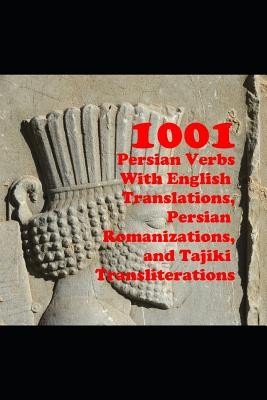
- We will send in 10–14 business days.
- Author: John C Rigdon
- Publisher: INDEPENDENTLY PUBLISHED
- ISBN-10: 1720175268
- ISBN-13: 9781720175261
- Format: 15.2 x 22.9 x 1.5 cm, softcover
- Language: English
- SAVE -10% with code: EXTRA
1001 Persian Verbs with English Translations, Persian Romanizations, and Tajiki Transliterations (e-book) (used book) | bookbook.eu
Reviews
Description
Among languages Persian has a rather unique position at this time in that a large number of people speak what is essentially the same language, but it is written in two different scripts. Western Persian, commonly called Farsi is spoken in Iran and uses the Persian script, a modified Arabic script. Dari, a dialect of Persian is spoken in Afghanistan and also uses the Persian Script. The Tajik dialect is spoken in Tajikistan, Afghanistan, Uzbekistan and Russia. Tajik has diverged from Persian as spoken in Afghanistan and Iran due to political borders, geographical isolation, the standardization process, and the influence of Russian and neighboring Turkic languages. To further complicate matters many people are adopting an ad hoc Latin writing of Persian words referred to as Finglish or Pinglish. This is primarily due to the widespread use of the internet. There is currently no standardization of the spelling for Finglish although that may develop over time. Even with all these influences and diversity, the three languages remain essentially mutually intelligible. This book contains the English word, the Persian translation, the Persian Romanization to aid in pronunciation, the Tajik translation and the Tajik transliteration. It also includes sections on conjugation of English and Persian verbs.
EXTRA 10 % discount with code: EXTRA
The promotion ends in 19d.22:23:19
The discount code is valid when purchasing from 10 €. Discounts do not stack.
- Author: John C Rigdon
- Publisher: INDEPENDENTLY PUBLISHED
- ISBN-10: 1720175268
- ISBN-13: 9781720175261
- Format: 15.2 x 22.9 x 1.5 cm, softcover
- Language: English English
Among languages Persian has a rather unique position at this time in that a large number of people speak what is essentially the same language, but it is written in two different scripts. Western Persian, commonly called Farsi is spoken in Iran and uses the Persian script, a modified Arabic script. Dari, a dialect of Persian is spoken in Afghanistan and also uses the Persian Script. The Tajik dialect is spoken in Tajikistan, Afghanistan, Uzbekistan and Russia. Tajik has diverged from Persian as spoken in Afghanistan and Iran due to political borders, geographical isolation, the standardization process, and the influence of Russian and neighboring Turkic languages. To further complicate matters many people are adopting an ad hoc Latin writing of Persian words referred to as Finglish or Pinglish. This is primarily due to the widespread use of the internet. There is currently no standardization of the spelling for Finglish although that may develop over time. Even with all these influences and diversity, the three languages remain essentially mutually intelligible. This book contains the English word, the Persian translation, the Persian Romanization to aid in pronunciation, the Tajik translation and the Tajik transliteration. It also includes sections on conjugation of English and Persian verbs.


Reviews